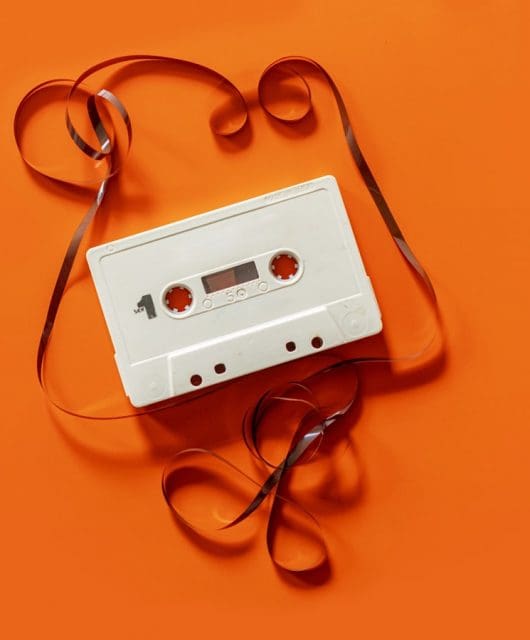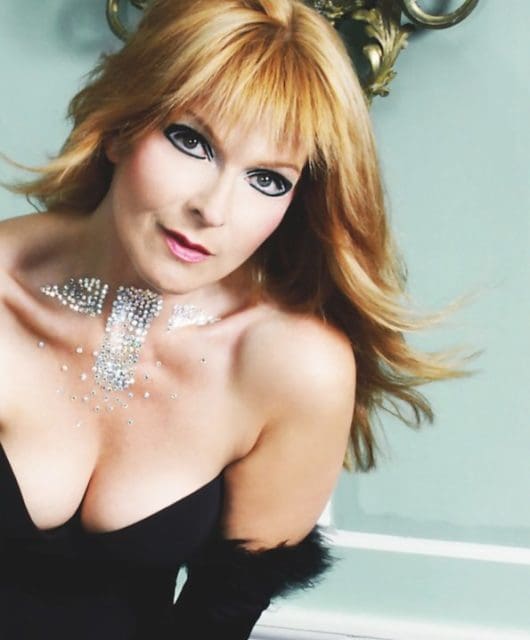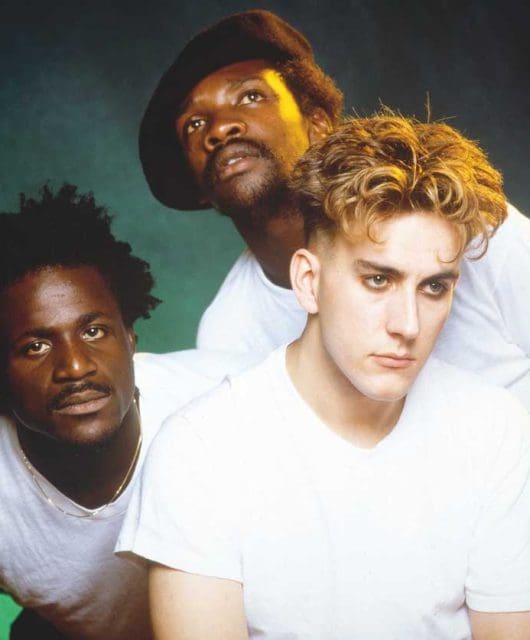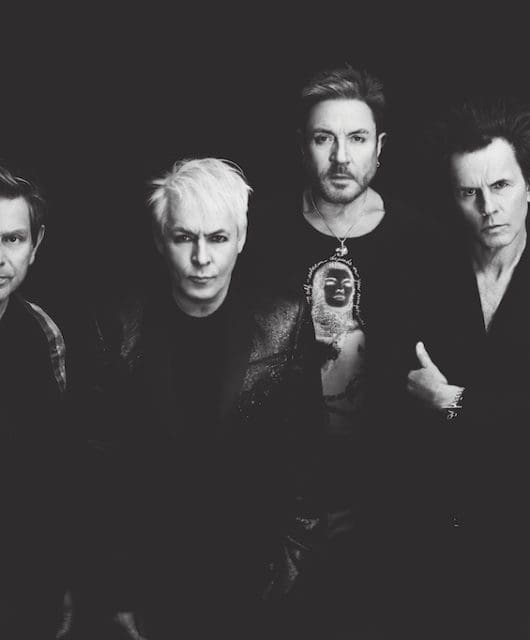Top 20 Blondie songs
By Classic Pop | March 28, 2024
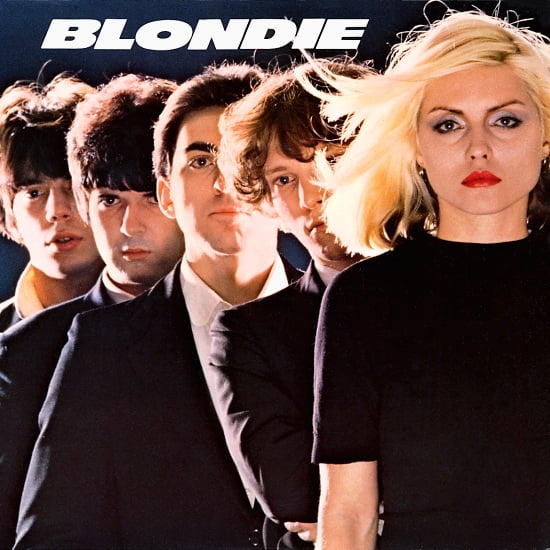
Encompassing garage rock, disco, power pop, reggae and rap, there’s no shortage of styles to choose from when compiling a list of the best Blondie songs. Our selection includes all of the band’s six UK No.1 hits together with some killer album tracks. By Jacob Wilson
When we chatted with Garbage’s Shirley Manson, she politely declined to give us her favourite Blondie track, explaining how so many of their creations held a unique place in her memory. When we floated the same question around friends and colleagues, we were met with a similar response. It’s fair enough. Blondie were (and still are) a rare phenomenon.
UBER-COOL
No other band at the time provided such a distinctly pop, yet truly uber-cool, exit from the crude, constrictive flash of punk, for a generation in search of melody, experimentation and a new aesthetic to admire. But more than that, theirs is a truly enviable chemistry, and one that, despite the hiccups and fallouts, has endured intact to the present day, and blossomed.
There are, of course, plenty of prime cuts missing here, with honours going to early stomp The Hardest Part, Eat To The Beat featuring Clem at his energetic finest, the fizzing punk pop of Living In The Real World, and the deliciously deadpan I’m On E. The Hunter’s misty-eyed ode, English Boys, deserves props, as does the band’s summery cover of Beirut’s Sunday Smile, a wonder in the catalogue.
Also absent are No Exit’s creeping, part-spoken-word gem Double Take, and the driving Nothing Is Real But The Girl, plus Pollinator’s Doom Or Destiny made with punk contemporary Joan Jett. There’s so many highs in their catalogue that we’ll no doubt have you screaming at the screen…
Nevertheless, here’s our Top 20 Blondie tunes. Let us know yours!
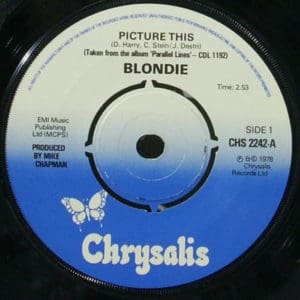
20 Fade Away And Radiate, Parallel Lines (1978)
In this Parallel Lines epic, Debbie strays from Hollywood glamourpuss – a coquettish Marilyn Monroe – to yearning 60s balladeer evoking rose-tinted imagery of urban nights, “Wrapped like candy in a blue, blue neon glow” over rung-out chords. “My dream is on the screen” purrs our leading lady over a soundtrack that flits cleverly from minimalist to widescreen, woven together with the help of guest guitarist Rober Fripp, to evoke the ebb and flow of cinematic narrative – sonic quirks that would later provide fuel for famous followers such as Radiohead’s Jonny Greenwood and Thom Yorke. A strangely apt reggae outro closes out the track.
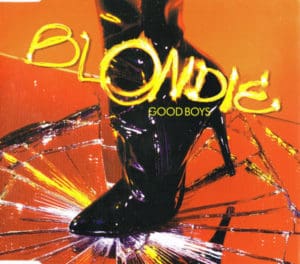
19 Good Boys, The Curse Of Blondie (2003)
The sole satellite unlinked from eighth album The Curse Of Blondie is somewhat of a forgotten high, deserving of far more attention than it gets. Debbie’s lyrical homage to Queen’s We Will Rock You dropped in the middle of the track almost landed them in hot water, but all was well and the single managed a healthy UK No.12 placing, helping the album to claw its way into the Top 40. The Jonas Åkerlund-directed circus-themed video was as good as it sounds, and typically slick remixes could also be found on the two-CD set from Call Me-collaborator Giorgio Moroder (check out the extended mix for the full experience) and Scissor Sisters.
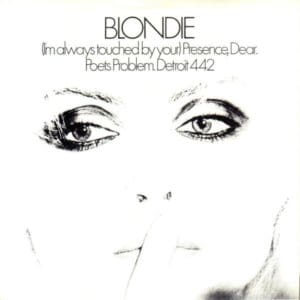
18 (I’m Alway Touched By Your) Presence, Dear, Plastic Letters (1977)
Penned by soon-to-be-ex-bassist Gary Valentine about his girlfriend Lisa Jane Persky and their seemingly telepathic connection and the “paranormal experiences” he had with her, Presence, Dear effortlessly charms thanks to a simple, upbeat chord pattern, and a neat mix of Debbie’s double-tracked vocals. It was Clem that convinced the band to record the song despite the fact Valentine was gone, and his galloping fills run wild, while Jimmy and Chris keep it simple. From this, it’s easy to see how Blondie’s melodic recipe provided a blueprint for later retro-loving guitar bands such as The Strokes.
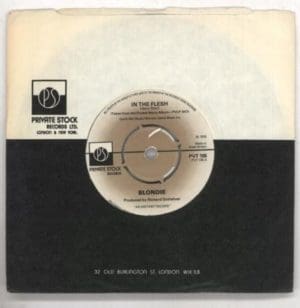
17 In The Flesh, Blondie (1976)
Blondie stood out from the crowded New York punk scene thanks to their out-of-step obsession with past innocence and nostalgia, with Debbie’s detached magnetism adding a contemporary edge. It may not have chimed with the cool kids at the time, but it’s since been hailed as a high point of their self-titled 1976 album. This, their second Private Stock single, summoned all of the key ingredients that would later define their future fame: demure 60s girl-group swoon and jukebox romance, juxtaposing those innocent pop hooks with a disarming story. Debbie, as always, provides a window into the future, riding the line between street-smarts and ultimate femininity. A No.2 hit down under.
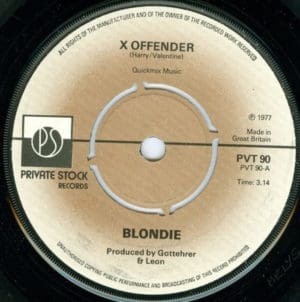
16 X Offender, Blondie (1976)
Described by its co-writer Gary Valentine at Blondie’s rather awkward Rock and Roll Hall of Fame induction as the song that “got us the record deal in the first place.” This tale of forbidden union betwixt a call girl and her arresting officer takes us by the scruff of the neck and drags us to the Bowery. Originally titled ‘Sex Offender’, but toned down by the band’s label, this was the punked-up new wave romp chosen to open their debut self-titled collection. Under producer Richard Gottehrer’s guiding hand, Jimmy Destri’s playful riffing organ, Clem’s faultless rhythm, Chris Stein’s surfy solo, and some sweet harmonies once more set pop savvy against the more salubrious subject matter.
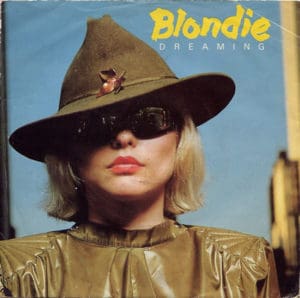
15 Dreaming, Eat To The Beat (1979)
The feel-good vibes of this power-pop ballad still hold court today: “Dreaming is free,” Harry croons in the chorus of the lead single from Eat To The Beat, a line dreamed up by Chris Stein, with Harry completing the rest of the lyrics around it. Inspiration came from Euro-pop, and the passing resemblance to a certain Swedish four-piece hovers in the background. “Dreaming is pretty much a cop of Dancing Queen,” Stein admitted to Entertainment Weekly. “A lot of times it’s the rhythm track that suggests what the lyric is going to be,” added Harry, and it’s Clem Burke’s thunderous drums that invigorate the song, as Debbie meditates on the fantasy of fame and a life free of its trappings.
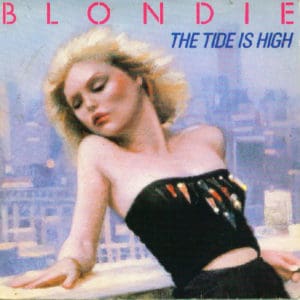
14 The Tide Is High, Autoamerican (1980)
Selected as lead single from Blondie’s fifth album Autoamerican, this delectable cover version of Kingston trio The Paragons’ 1967 rocksteady obscurity was discovered by Debbie on a compilation given her in London. Under producer Mike Chapman’s direction, with veteran composer Jimmie Haskell providing the string and horn arrangement, the track shot to No.1 on both sides of the Atlantic. Much like the then-alien sounds of rap brought to the fore by the band for Autoamerican’s other big hit single, Rapture, The Tide Is High brought the equally peripheral sounds of Jamacian rocksteady to the attention of the average American.

13 Detroit 442, Plastic Letters (1978)
The CBGB grit and youthful hunger was still palpable on second album Plastic Letters, no more so than on the pummelling visceral punk guitars and sneering vocal of Detroit 442 – taking its name from the Oldsmobile 442, the infamous American muscle car. Stein and Destri concocted this chorded, whammy-happy, organ-fuelled road anthem, while Clem’s thumping beat provides the ever-present backbone. Debbie snarls, “Feel hot to go like Jimmy O” (a reference to touring partner Iggy Pop’s real name) amidst bleak imagery of concrete factories and assembly lines – it’s clear that this is the raw, unedited early Blondie in full effect.
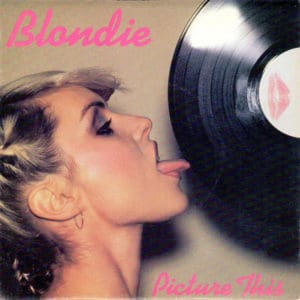
12 Picture This, Parallel Lines (1978)
“All I want is a room with a view” – for what appears a straight-up musical love letter to boyfriend Chris, Debbie’s lyrics (for producer Mike Chapman “elusive and beautiful”) were brought vividly to life with help from Jimmy and Chris himself. Here, the trio forged a stone-cold Blondie classic that gently binds all the key ingredients that made Parallel Lines so perfect: cascading girl-group melodrama, New York style, and a faint echo of the band’s punk past. The lead single from the album, Picture This wasn’t issued in the US, but it narrowly missed the UK Top 10, Mick Rock’s provocative sleeve photo featuring Debbie licking a vinyl adding further allure.
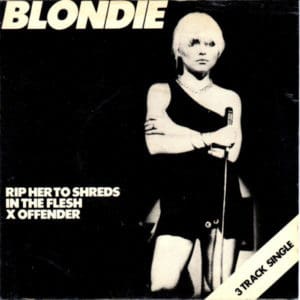
11 Rip Her To Shreds, Blondie (1976/77)
This, the first single on Chrysalis, has been deciphered as an attack on press treatment of women, a roasting of Sid Vicious’ other half Nancy Spungen (as the ‘Miss Groupie Supreme’ of the lyrics) and, as Debbie explained, a representation of the scene at the time. “It’s so dirty and menacing,” Harry told Entertainment Weekly. “That’s what the New York scene was like. There was toughness, but a lot of affection as well.” Chris’ guitar rides the wild surf, while Jimmy brings his Farfisa organ hook, with Debbie both suave and street on the mic. The label famously supported the single with that infamous poster bearing the slogan: “Wouldn’t you like to rip her to shreds?” – much to Debbie’s disdain.
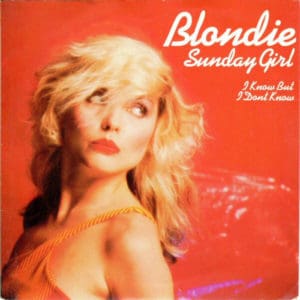
10 Sunday Girl, Parallel Lines (1978)
“I know a girl from a lonely street/ Cold as ice cream but still as sweet” – it would seem that within the detached romanticism painted here that Debbie was somehow describing her own indefinable magnetism but, in fact, this 1979 single supposedly concerned itself with a runaway pet cat – Sunday Man – owned by Harry and Stein. Written by Chris, this continued the lucrative 60s harmony-meets-new wave blueprint, as the follow-up to cross-Atlantic mega-hit Heart Of Glass, and managed to win the No.1 spot in the UK, plus Top 10 placings in various other European territories. As Melody Maker’s Harry Doherty declared at the time, this really was “pop excellence”.
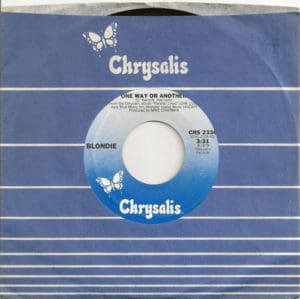
9 One Way Or Another, Parallel Lines (1978)
In a way it’s the watermark that proves the overriding quality of Blondie. As surely one of the band’s best-loved tracks, it’s incredible to think it didn’t even make UK single status. But when seen in context, housed as it is within a set of such quality as Parallel Lines, it becomes easier to understand. It’s another to add friction by placing pop savvy alongside darker themes, this one being about a stalker: “I was actually stalked by a nutjob,” Harry told Entertainment Weekly. “So it came out of a not-so-friendly personal event. I tried to inject a little levity into it to make it more lighthearted.” Plenty of others have had a crack at this one, including a Debbie Harry-approved version by One Direction.
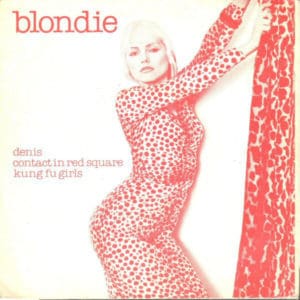
8 Denis, Plastic Letters (1978)
Blondie had their first taste of proper chart success breaking through across Europe with their second Chrysalis single, a teenage love lament commandeered from doo-woppers Randy and The Rainbows, who’d found some success with it in 1963. Cleverly recast for their audience, and with the gender switched, Denis rose to No.2 in the UK, only kept from ultimate chart glory by Kate Bush’s Wuthering Heights – a noble opposition if ever there was one. “Debbie sang part of it in French,“ explained producer Richard Gottehrer. “I didn’t even know if the French was real, but it became their first hit in the UK. Middle America didn’t care.”
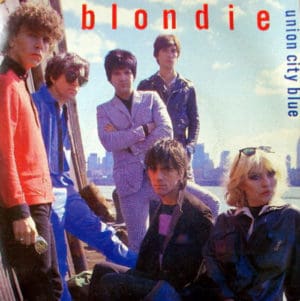
7 Union City Blue, Eat To The Beat
Union City Blue revisits Debbie’s past times as a go-go dancer in Union City, New Jersey, via a mythical romance story of power and passion, set to an expansive dream-pop skyline dreamt up by Debbie with then-bassist Nigel Harrison. Its video adds colour to the scene conjured in the lyrics with the band performing on the Union City docks, Debbie in mirrored shades, a rare moment in which she’s slinging a guitar. The single wasn’t released in the States, but managed a healthy No.13 in the UK, and has since appeared in Oliver Stone’s 1981 horror film The Hand, as well as being covered by numerous hip indie kids.
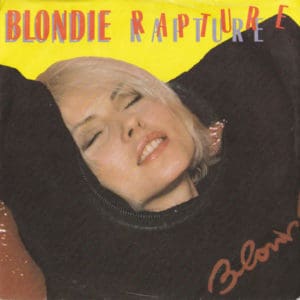
6 Rapture, Autoamerican (1980)
At first we were a little dubious, as Debbie rapped about men from Mars and all that eating of cars and bars, it sort of broke her mystique to a young music fan listening in the 90s, completely acclimatised to rap and hip hop. It always seemed utterly bizarre that this was the first ‘rap’ song to make it to No.1. But, ’tis true, we heard it out of context. After all, it was given the seal of approval by the rap faces of the time, friends from the New York block parties frequented by Debbie and Chris – plus Wu Tang Clan have since said it was the first they had heard of rap. Its importance in the emergence of the whole rap and hip hop scene cannot be ignored.
Read more: Making Blondie’s Parallel Lines
Read more: Blondie – Pollinator review
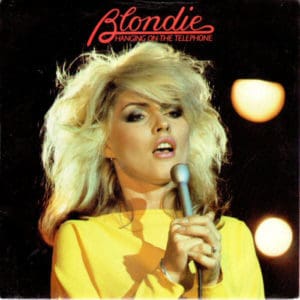
5 Hanging On The Telephone, Parallel Lines (1978)
Opening Blondie’s breakthrough third album Parallel Lines, this irresistible confection of 2 minutes 17 seconds of pure sugary punk-pop immediately resulted in an immovable earworm for anyone with ears. It may have been a straight-down-the-middle gender-flipped remake of a song cut by short-lived Cali punk outfit The Nerves (right down to the ringing telephone that begins the track), but Blondie and producer Mike Chapman pushed it seamlessly into the mainstream with no loss of cool.
Chapman was installed to ensure that the pop hooks were right up front for Parallel Lines, but nowhere else is it more evident than right here, its fizzing chorus capturing “that magical Ronettes-like poppiness”, enthused Melody Maker’s Harry Doherty at the time. Hanging On The Telephone became Blondie’s lift-off moment in the UK, effortlessly piercing the Top 5, as well as being a moderate hit Europe-wide – even if it did fall on deaf ears in the US. Boo.
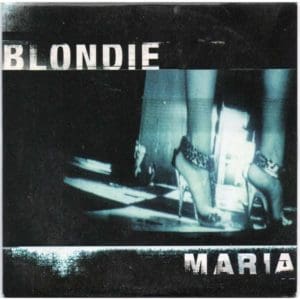
4 Maria, No Exit (1999)
Over 15 years had passed when Blondie finally regrouped for what has got to be the most effortless return made by any group in the history of pop. This instant classic – Jimmy Destri-penned – single showed the world that comebacks can feel completely uncontrived and utterly natural. It was, to use a well-worn cliché, like the Blondie of old had never gone away, and Maria was actually up there with one of their career finest.
With lustful, but loving lyrics about Destri’s childhood sweetheart, Maria bottled their heyday essence, while sounding entirely comfortable where it was, in 1999. The song was UK No.1, a feat they’d now achieved across three decades. “The band was aware that our comeback had some momentum, but to have a No.1 was a pleasant shock,” admitted Harry. “Maria is maybe our most pleasing No.1 for that reason.” Forget about great comeback singles, this is one of the great singles.
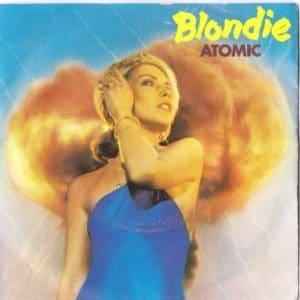
3 Atomic, Eat To The Beat (1979)
A signature Blondie track that came together during the Eat To The Beat sessions by happy accident rather than by any shape of design, third single Atomic was the product of Jimmy Destri’s consistent, yet failed, attempts to recreate a song in the same vein as their triumphant mega-hit Heart of Glass. Luckily, things took a fortuitous upturn when, as Debbie remembered, “he gave it the spaghetti-western treatment” – and when she added her lyrics. Simultaneously both super-fun and super-cool, with the required hooks nailed in place, Atomic climbed swiftly
to the summit of the UK charts, before returning to the UK Top 20 some 15 years later, in 1994, when the track slipped in at No.19 thanks to a P Diddy remix. Producer Xenomania also deftly reworked Atomic for The Very Best Of Blondie a few years on.
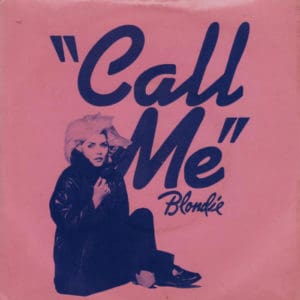
2 Call Me, American Gigolo (1980)
By the time of this 1980 Giorgio Moroder collaboration, Blondie were on a roll. Debbie, in particular, was seriously hot property. Just one year previous, Heart Of Glass had stormed to No.1 in the UK and US and elevated the band to Rolling Stone cover stars. Moroder originally had his sights set on Stevie Nicks to help write and sing the tune for Paul Schrader’s thriller American Gigolo but, with Nicks busy, Debbie stepped up for what would end up one of the coolest get-togethers in pop history. The backing track was cut in LA, before Blondie added their parts in New York. It was then back to LA, where Moroder finessed the whole, adding a keyboard solo from Harold Faltermeyer, of Axel F. fame. A No.1 smash in both the UK and the US.
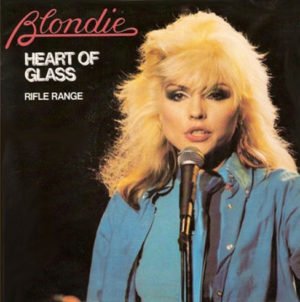
1 Heart Of Glass, Parallel Lines (1978)
Blondie’s disco-pop classic originated as far back as 1974, from a pre-Blondie composition written by Debbie and Chris entitled Once I Had A Love, aired live as ‘The Disco Song’. It was a last-minute addition to Parallel Lines, thanks to producer Mike Chapman fishing for more material. Luckily, he recognised potential and ran with the idea. Chris Stein remembered: “We were thinking more about Kraftwerk than disco by that point”, perhaps the reason they acquired a state-of-the-art Roland CR-78 drum machine before recording – described by Debbie as “this little rhythm box that went ‘tikka-tikka-tikka’”.
This new device provided the syncopated intro before Clem’s solid disco groove met Jimmy Destri’s silky Roland SH-5 textures. Debbie, meanwhile, captured that aloof city-cool. Heart Of Glass conjured visions of the changing NYC backdrop that meant so much to the band throughout their history. The single was an absolute triumph, stealing No.1 in both the UK and the US, and selling over a million in both. Disco-pop perfection.
Did you enjoy our list of the best Blondie songs? What’s your favourite? Tell us in the comments section below.
Read more: The Lowdown – Blondie & Debbie Harry
Read more: Debbie Harry interview



